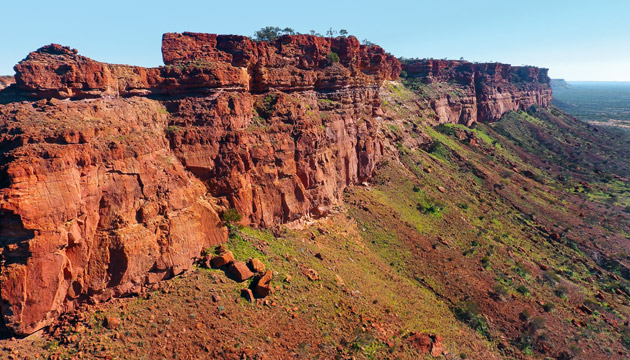Western Australia’s Wool Wagon Pathway is a nod to a past based on the sheep’s back and a future based on tourism.
Story + Photos Don Fuchs
The Wool Wagon Pathway (WWP) is a 1100-kilometre route across inland Western Australia. The WWP travels through what was once among Australia’s most productive sheep and wool country: the Murchison and Upper Gascoyne regions. It’s a drive back to the heady times when Australia rode on the sheep’s back and fortunes were made. Everything revolved around wool then. Today, however, an encounter with sheep is a rare occurrence indeed.
The WWP starts in Pindar, 98km inland from the coastal city of Geraldton. Bitumen ends and dirt begins on Pindar’s outskirts. From there, the dusty road leads into mostly flat country. “This country was opened up in the mid-1860s when they brought flocks from the coast, from Northampton, into some beautiful saltbush flats on the Greenough River,” Emma Foulkes-Taylor says. She and husband Rossco own Yuin Station, 63km north of Pindar. In those early days, sheep along the coast suffered from what was then called coastal disease, a mineral deficiency. Nourished with a varied diet, the sheep recovered quickly here. Over time, wells were established, more sheep arrived and eventually Yuin Station was established in 1867.
This story excerpt is from Issue #121
Outback Magazine: October/November 2018










